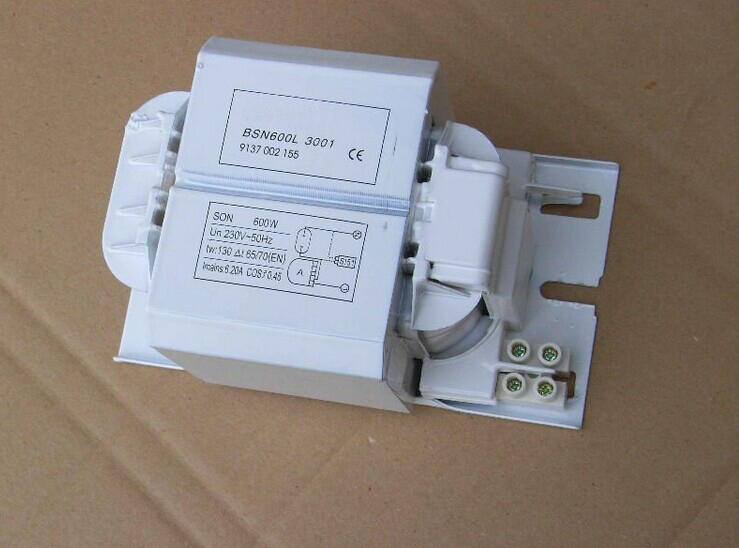The high pressure sodium ballast provides the proper starting voltage, operating voltage and current to the lamp to initiate and sustain the arc. HID lamps have a negative resistance characteristic, which causes them to draw an increasing amount of current, hence need a current limiting device. The ballast provides these functions. There are several different ballast types used for for HID lighting. Basically, there are two primary distinctions between ballasts: "lag circuit" and "lead circuit" ballasts. The current in lag type ballasts is controlled by an inductive resistance in series with the lamp, whereas in lead type ballasts it current control is provided by both inductive and capacitive resistances in series with the lamp.

HID ballasts require both a magnetic circuit to produce the proper open circuit voltage and control current,and a special electronic starting circuit. HPS lamps require a high voltage pulse for ignition. This ballast in conjunction with an electronic starter circuit serves this function. This circuit applies a high pulse voltage required to initiate the gaseous discharge in the lamp. 2,500 volts minimum is required for 400 watt and below; 3,000 volts minimum for 1000 watt. The pulse repeats each half cycle. The pulsing circuit is de–energized after the lamp arc is established.
Metal Halide Ballasts | High Pressure Sodium Ballasts | Fluorescent ballasts | Gear Tray
Links: Porcelain lamp socket | Mercury Vapor Ballast | Light bulb socket
Xml Copyright: @2012-2020 James Lighting Electronic Co.,Ltd